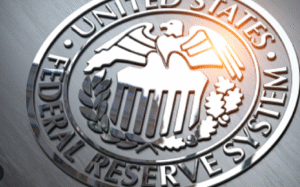$Z $INVH $CPI
#Inflation #RentInflation #FederalReserve #RealEstate #MonetaryPolicy #ShelterCosts #InterestRates #CPI #HousingMarket #EconomicOutlook #PricePressures #InflationForecast
According to a model from the Cleveland Federal Reserve, rent inflation is projected to remain elevated until at least the middle of 2026. This forecast comes despite some signs from the housing market suggesting new rental prices are declining. While certain reports have pointed to minor decreases in listings for new rental agreements, the broader measure referenced in the Consumer Price Index (CPI) that tracks rent is expected to stay significantly high. One key reason for this prolonged period of inflation is the reduced turnover in rental leases. With tenants renewing their contracts more frequently, landlords who typically increase rents between tenancies have less incentive to adjust rates, limiting opportunities for rent to recede as rapidly as other sectors. This situation creates a particularly difficult environment for accurate short-term inflation readings.
Persistent shelter cost inflation places increasing pressure on the Federal Reserve’s strategy to manage overall inflation. Rent and other shelter costs make up a substantial portion of the core CPI, and with rent inflation staying elevated, it may make it harder for the Fed to comfortably assert that inflation is undergoing a sustainable decline. As shelter inflation alone is enough to buoy headline inflation figures, it’s likely that the Fed could be more cautious in cutting interest rates. A delay in rate cuts could mean tighter financial conditions for longer, deterring both lending and borrowing in a broader sense, which would impact economic growth. Apartments and residential real estate investment trusts (REITs) like Invitation Homes ($INVH), for instance, could be relatively well-positioned in this scenario as they may continue to benefit from strong rental demand and longer-term stable income flows.
This forecast extends the timeframe for high inflation in the rental market considerably, possibly until mid-2026, a timeline that will keep substantial upward pressure on residential housing costs. Investors, real estate developers, and renters alike will be impacted. For those with large exposure to real estate, like Real Estate Investment Trusts, this means stable but limited growth as elevated rents and extended leases ensure steadier income streams, albeit with subdued future volumes. The situation may also have ramifications across financial markets, with stocks indirectly tied to consumer expenditures on housing likely impacted. The stock prices for companies with large exposure in the equity real estate investment sector, like $Z (Zillow Group), could see significant volatility depending on how aggressively those property companies adjust for extended rent pressures.
From the broader economic standpoint, high shelter costs make it difficult for policymakers to forecast exactly when inflation metrics will fall to a level that allows for more accommodative monetary policy. The housing sector, given its influence over inflation statistics, could become a stubborn variable that hinders the Federal Reserve’s ability to follow through on realizable rate cuts in the next several years. Consequently, the Fed’s predicament could add uncertainty to otherwise optimistic economic scenarios where inflation would recede more swiftly. That uncertainty raises questions about both the pace of cooling in the broader economy and the timing of when markets move towards lower interest rate environments, leaving investors cautious about over-levering against rate sensitivity.






Comments are closed.